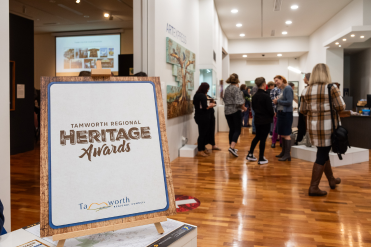The intertwined diet of the Southern Ocean’s top-level predators will be the focus of a significant new study of the health of the sub-Antarctic ecosystem.
Vertebrate ecologist and postdoctoral researcher with the Institute of Marine and Antarctic Studies (IMAS) Dr Julie McInnes is the first female recipient of the esteemed RJL Hawke Postdoctoral Fellowship, awarded by the Australian Antarctic Division.
In using the diet of predators as an indicator of Southern Ocean health, Dr McInnes and the research team will design and implement a marine ecosystem monitoring framework using prey DNA from vertebrate scats.
So, how can poo help tell the story?
In the past, conventional wildlife monitoring has typically taken the form of ground surveys and tracking to understand population dynamics and foraging ecology. However, recent technologies such as miniaturised cameras, drones and underwater vehicles have enabled further insight into marine ecosystems.
Dr McInnes said that despite there being some “innovative and new sampling platforms” some facets of ecosystem function remained “really tricky to observe and to measure”, such as predator-prey interactions, especially in remote locations such as Heard and Macquarie Islands.
Enter, the humble scat – or in the case of Dr McInnes’ previous PhD project on the development of non-invasive DNA methodologies to assess albatross diets – 3000 of them collected over the life of the project.
“It is difficult to observe the feeding behaviour of seals and seabirds at sea, including interactions with fisheries,” Dr McInnes said.
“So trying to get an estimate of the true diet is something we’ve always grappled with and DNA adds another piece to the puzzle.”
The beauty of the scat, said Dr McInnes, was the non-invasive nature of collecting it – unlike other samples such as stomach contents or tissue samples – and the ability to detect prey DNA from a range of species that may go undetected with conventional dietary methods, such as soft-bodied prey like jellyfish.
“The AAD is a world leader in DNA dietary analysis and I’m very excited to continue my work developing and applying these methods,” she said.
The power of food pathways
For the Hawke fellowship, Dr McInnes will focus specifically on the diet of top-level predators as an indicator of the overall ecosystem health of the Southern Ocean. This will involve investigating food web linkages and pathways by examining predator-prey interactions, which will enable prey biodiversity to be assessed and missing links in the food chain to be identified.
With this new dietary data and existing data, she’ll investigate whether the diet of vertebrate predators, such as gentoo penguins, has changed over time, what may be driving these changes, and how this may affect population trends and breeding success.
Dr McInnes said she really wanted her work to be “meaningful and effective” for the conservation and management of Australia’s sub-Antarctic ecosystems, and designing and implementing a genetic monitoring approach would allow these methods and models to be incorporated into future monitoring programs.
“There is still so much we don’t know about the sub-Antarctic and how changes currently occurring to the marine environment may impact vertebrate predators,” Dr McInnes said.
“This project will enable us to examine species interactions from a different (somewhat smelly) perspective.”
A long-standing passion for marine ecosystems
Dr McInnes has worked extensively on the ecology of Southern Ocean seabirds and mammals, with a focus on applied research to create better conservation and management outcomes.
It’s a vast, complex, connected world and her work, primarily through Tasmania’s Department of Primary Industries, Parks, Water and Environment (DPIPWE) has taken her four times to the World Heritage-listed Macquarie Island as a field biologist and wildlife ranger, working predominantly with the island’s vertebrate species.
She has also been twice to Mawson research station as an ecologist with the AAD, researching Adelie penguin foraging behaviour and diet, and carrying out population surveys of other species such as snow petrels, cape petrels and emperor penguins.
While each of these postings focused on the ecology of individual species, her body of research continued to grow and Dr McInnes saw more and more opportunity to delve deeper into their shared ecosystem, to better understand its structure and function as a whole and how multiple species interact within it.
The prestigious RJL Hawke postdoctoral fellowship is awarded once every two years to an Australian University and offers an opportunity for early career post doctorate graduates to undertake science aligned to the Australian Antarctic Science Strategic Plan.
The project is being led by IMAS Associate Professor Mary-Anne Lea, in collaboration with Dr Ben Raymond, Dr Barbara Wienecke and Andrea Polanowski (AAD), Sam Thalmann (DPIPWE), Dr Bruce Deagle and Dr Rowan Trebilco (CSIRO).
5 August 2020
Australia’s new icebreaker on the move













